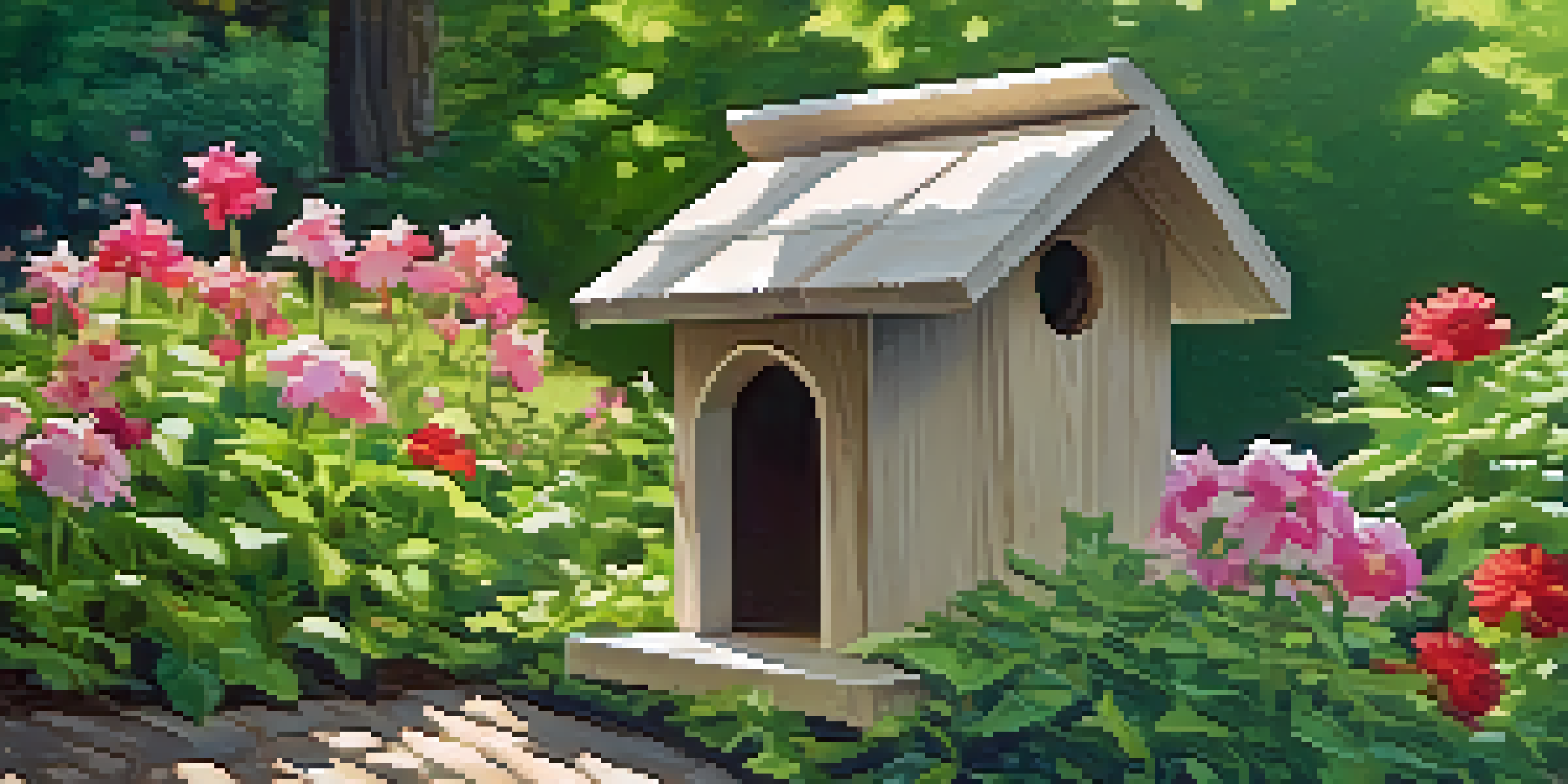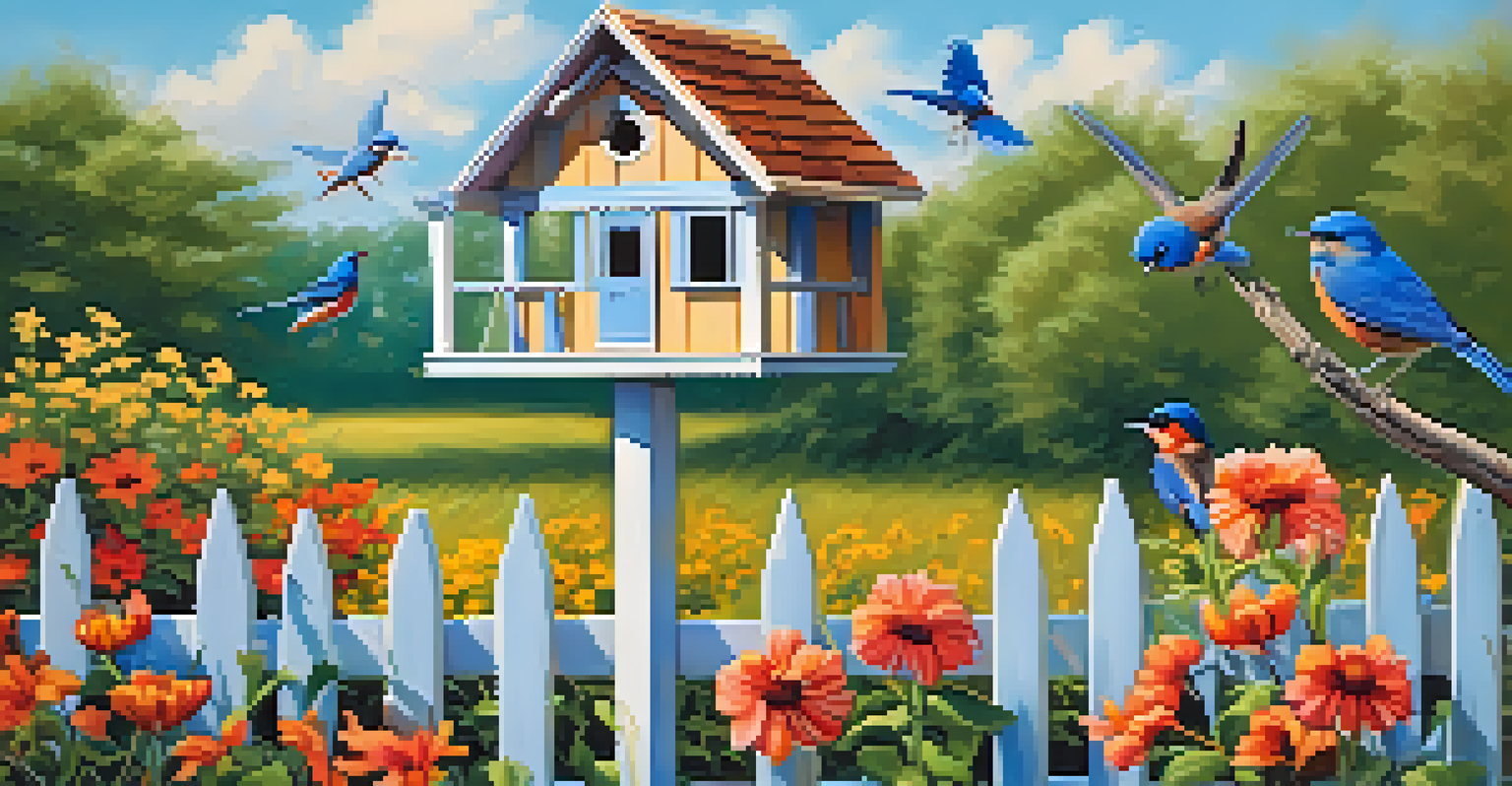Building Birdhouses: A Guide to Supporting Local Bird Species

Understanding the Importance of Birdhouses
Birdhouses are more than just cute additions to your garden; they play a vital role in supporting local bird populations. By providing a safe nesting environment, these structures help birds thrive in urban and suburban areas where natural habitats may be scarce.
Birdhouses provide a way for us to connect with nature and witness the beauty of life cycles in our own backyards.
Many bird species are facing challenges due to habitat loss, climate change, and urban development. A well-placed birdhouse can offer a refuge for these birds, contributing to their survival and encouraging them to raise their young.
Creating a bird-friendly space fosters biodiversity and can enhance your own backyard experience. Observing birds as they build nests and raise their chicks can be a rewarding and educational experience for both children and adults.
Choosing the Right Location for Your Birdhouse
Selecting the right location for your birdhouse is crucial for attracting the right species. Ideally, birdhouses should be placed in quiet, sheltered areas that provide some protection from harsh weather and predators.

Consider positioning the birdhouse away from busy areas of your yard, ensuring it's at least 5-10 feet above the ground. Trees, shrubs, or poles can be great spots, but make sure there’s enough space around for the birds to safely access their new home.
Birdhouses Boost Local Bird Populations
Providing birdhouses creates safe nesting environments, helping local bird populations thrive amidst habitat loss.
Additionally, different species have varying preferences for orientation and entrance hole size. Research the birds native to your area to determine the best placement and design for your birdhouse.
Selecting the Right Materials for Birdhouses
The materials you choose for building your birdhouse can significantly impact its durability and attractiveness to birds. Untreated wood, such as cedar or pine, is often recommended because it provides excellent insulation and is safe for birds.
By creating habitats for wildlife, we not only support their survival but also enrich our own lives with the joy they bring.
Avoid using pressure-treated wood, as it contains chemicals harmful to birds. Instead, opt for natural finishes or leave the wood bare to allow it to weather naturally, which can create a more inviting environment for nesting.
Additionally, consider using materials that allow for ventilation and drainage, such as holes or slats near the roof and floor. This will help keep the interior comfortable for the birds throughout the seasons.
Designing Birdhouses for Specific Species
Not all birds are created equal, and different species have unique nesting requirements. When designing your birdhouse, it's essential to consider the specific needs of the birds you want to attract, such as entrance hole size and interior dimensions.
For example, wrens prefer smaller entrance holes, while bluebirds need larger openings. Research the dimensions that are ideal for your target species to ensure your birdhouse meets their needs.
Choose Location and Design Wisely
Selecting the right location and designing birdhouses based on specific species' needs are crucial for attracting birds.
You can also get creative with your designs, adding features like perches, ventilation holes, and drainage systems. Tailoring your birdhouse to specific species not only increases your chances of attracting them but also helps meet their natural instincts.
Building Techniques for Your Birdhouse
Once you've chosen your materials and design, it's time to put your birdhouse together. Start by cutting your wood pieces according to your plans, ensuring you have all the necessary parts, including the base, sides, roof, and entrance.
Using a hammer and nails or screws, assemble the birdhouse carefully, making sure it’s sturdy enough to withstand wind and rain. It’s a good idea to use wood glue in addition to nails for added strength.
Lastly, remember to leave the roof removable or install a hinged access panel for easy cleaning and maintenance. This will help keep the birdhouse hygienic, which is essential for the health of the birds that use it.
Caring for Your Birdhouse Throughout the Year
Maintaining your birdhouse is crucial for ensuring it remains a safe and inviting home for birds. Regular inspections, especially after nesting season, can help you identify any necessary repairs or cleanings.
After the birds have fledged, it’s important to clean out old nesting materials. This not only prevents the spread of disease but also encourages new birds to take up residence in the following seasons.
Maintain Birdhouses for Longevity
Regular maintenance and cleaning of birdhouses ensure they remain safe and inviting homes for birds year after year.
Additionally, consider applying a protective sealant to the outside of the birdhouse every couple of years to prolong its life. By caring for your birdhouse properly, you’ll help ensure it remains a cherished home for local birds for years to come.
Encouraging a Bird-Friendly Environment
While building a birdhouse is a fantastic first step, creating a bird-friendly environment goes beyond just providing shelter. Planting native flowers, shrubs, and trees can provide food and additional nesting sites for various bird species.
Consider adding bird feeders and baths to your yard, which can attract even more feathered friends. Make sure to keep these areas clean and filled with fresh water and food to create a welcoming habitat for birds.

By fostering a diverse ecosystem in your backyard, you’ll not only attract a variety of bird species but also enrich your own outdoor experience, creating a thriving community of wildlife right outside your door.